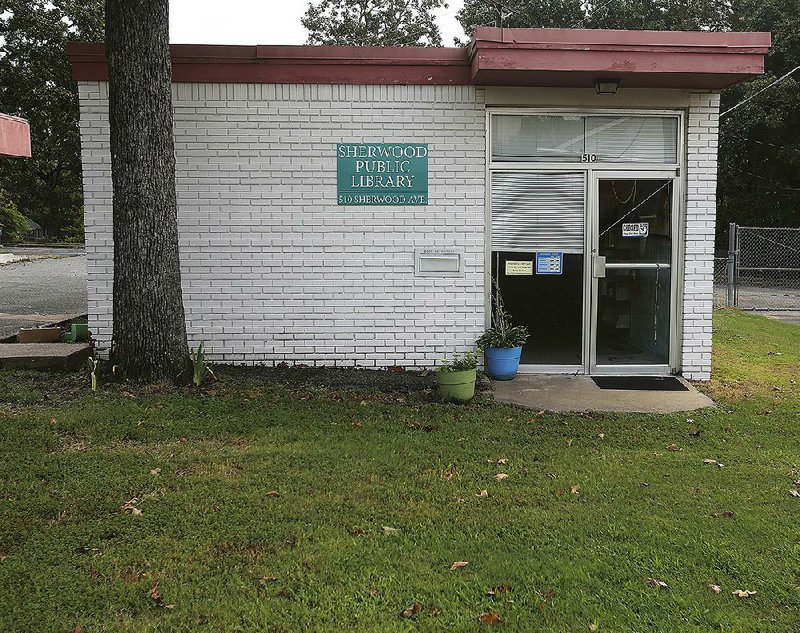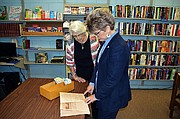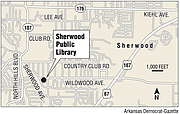Sherwood is a fairly young city compared to its neighbors, but hidden behind the nooks and crannies is an expansive history that city officials want to uncover.
Mayor Virginia Young announced this week that the Sherwood Public Library, located at 510 Sherwood Avenue, will close Sept. 30 and the building will be repurposed into a historical museum.
The building has been in continuous operation since 1973 and is the city’s original library. Sherwood is also home to the Central Arkansas Library System’s Amy Sanders Library, built in 1989 at 31 Shelby Drive and relocated to 10200 Johnson Drive last year.
The Sherwood Public Library was the first building the city’s newly-founded government built, according to Amy Sanders, a member of the city’s historical committee. Sherwood’s other library bears Sanders’ name.
“It was originally the City Hall building,” the 95 year-old Sanders said Friday while walking into the library. “My first job with the city was here. I was answering the phones at the library.”
The building has seen fewer visitors over the past 30 years as it has given way to the newer library.
“We have averaged 40 visits per month,” said Julie Tharp, the facility coordinator for Sherwood. “Right now we have 14.”
Young decided earlier this year to turn the library building into a museum that embraces the city’s roots.
“Mrs. Amy wanted a place to call home for history,” the mayor said. “We want to have displays that will allow people to watch short videos on the history of Sherwood. We have newspaper clippings and books.
“I think this will turn out nice.”
Sanders, the last living person who assisted in the incorporation of Sherwood, will be among those in charge of creating the museum.
“This building is part of history,” Sanders said while admiring a notebook that had the original names and library card numbers of people who visited the building.
Sherwood is a fairly new town, having been incorporated as a town in 1948. The old library was built in what was the heart of the original town.
“We had 715 people in the town at that time,” Sanders said with a laugh.
Sherwood is a far cry from what it was in 1947, thanks to the annexation of the Sylvan Hills and Gravel Ridge communities. Young said officials want the museum to reflect the stories of those communities too.
“We have grown by annexation, and there was a lot of history in those communities,” she said. “We are hoping that we can raise awareness about this museum and people will contribute items from the past that we can display.”
Among the items that have already been donated is a grindstone from the old Kellogg Mines, which were located in the area known today as Sylvan Hills.
“I am pretty sure it was used to sharpen tools, but it was donated to us four or five years ago,” Young said. “It would be the oldest piece of history we have.”
Benjamin Kellogg, a blacksmith and farmer originally from Pennsylvania, and his family settled in the area in 1820, according to a “History of Sherwood” article written by Darrell W. Brown posted on the city’s website. Twenty years later, precious minerals were discovered on Kellogg’s land.
Thomas Newton Sr., president of the Southwest Arkansas Mining Company, leased Kellogg’s land and began mining operations, according to Brown’s account.
Mining operations shut down in 1861 after the Civil War began, and Confederate forces took over the mines and used the lead to make bullets, according to the city’s website. Two years later, Union forces took over the Kellogg Mines and destroyed Confederate operations there.
The mines resumed operation a year after the Civil War ended, according to the city’s website, and closed permanently in 1926.
Pictures of the remnants of the Kellogg Mines are displayed in Sherwood’s City Hall.
“We are hoping to get more pictures or items from Kellogg Mines,” said Stacey Galloway, the mayor’s assistant.
Original street signs from the city’s founding are also on display at City Hall, and most of the city’s roads have a story behind them, Young said.
In 1874, John Hampton Lea and Annabelle (Smith) Lea settled on 500 acres in the area. Although misspelled, Lee Avenue is named after the Lea family and a family cemetery is located near the corner of Essex and Coolhurst streets, according to the city’s website.
Frank and Mary Calva settled in 1881 and built their homestead on a large portion of land where the town would be founded many years later. Calva Road is named after the couple.
Julius Koehler Sr. and his wife, Pauline, purchased and farmed land in the southwestern part of Sherwood in 1912. Now Koehler Avenue bears their name.
“We are hoping to have some of the original street signs on display as well,” Young said.
Photos of Sherwood residents celebrating America’s 200th birthday in 1976 also are on display at City Hall, and Young said she is excited that items from that period will find a home in the museum.
“I think when people see how this city participated in the bicentennial, it will cause some amazement,” the mayor said.
Sanders said officials hope to be able to tell the story of Sherwood through newspaper clippings, photos and archives collected over the years and with the help of donations from city residents. “I can’t wait to get started,” she said.


